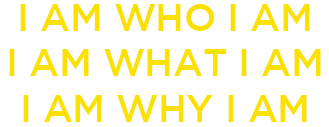
06 Jul Kotodama 65
“I”, “Is”, and “Time” are the most frequently used pronoun, verb and noun.
While these words never appear together as a sentence, “I is time” reveals what we are.
“I” implies a personal self that’s separate from all that is not the self.
“Is” (unlike the customary “am”) suggests a universal identity beyond the personal self.
Our universal identity is the soul.
The soul is the Everything: the infinite possibilities before, in, and after the now.
The now is the soul manifesting.
“Time” is a conceptual construct that frames how the self perceives the now, as separate events involving independent things; not as it is: an interdependent timeless flow.
(That is, time does not exist. The seemingly everchanging now is what’s revealed in the light spectrum and hidden in other parts of the electromagnetic spectrum as the spectrum moves through space, not time.)
“I is time:” I, the self, am the soul experiencing its manifestation as a human.
I Is Time
Acronym: “I IT”
“IT” is the basic noun for undifferentiated reality. Before something is described, it’s an “IT”.
“IT” encompasses infinite possibilities before they are realized in the now.
“IT” is the soul.
“I IT”: I am the soul.
“I IT” is “EYE IT”: what I see is what I am.
“I I T”: I am IT (information technology).

